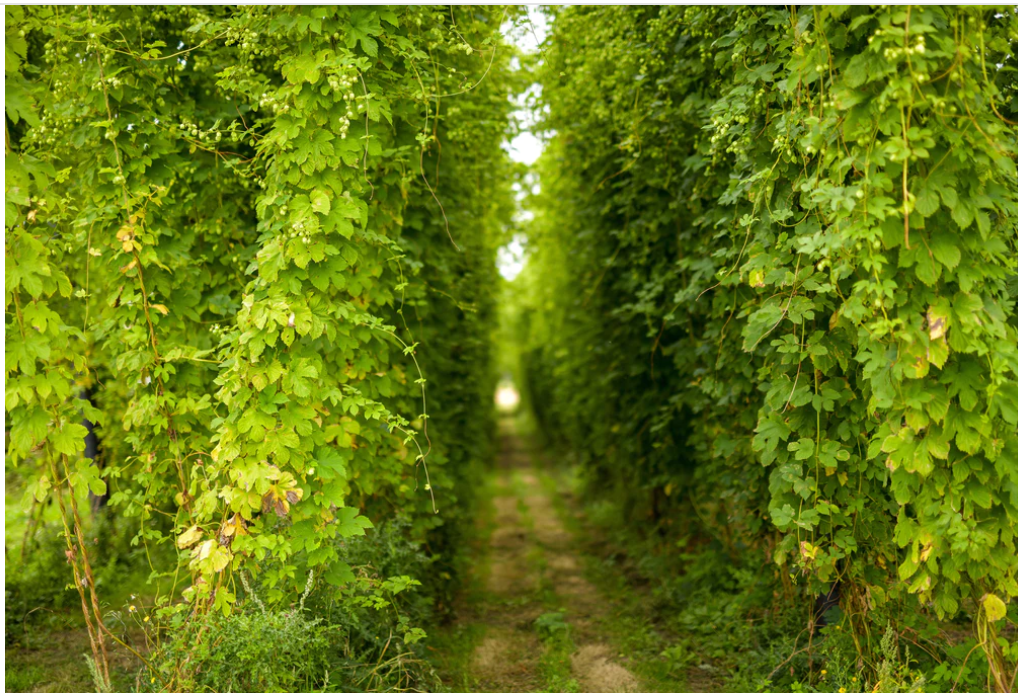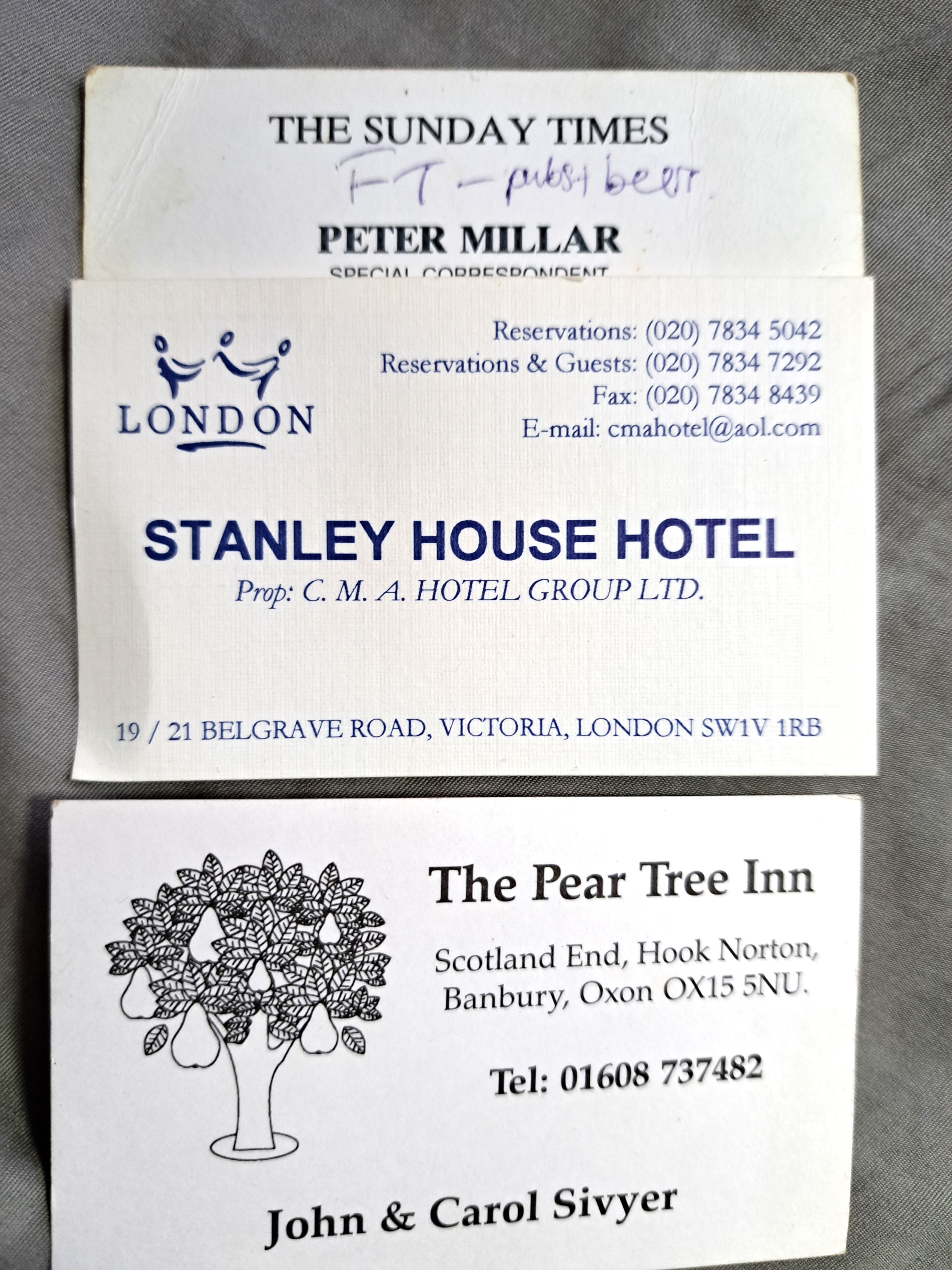It definitely is a notable fresh/wet hop flavour in it.
I like it.
I like it.


I always find these histories exciting, because there are so many contradicting each other. For example there is this quote from the UK brewery map:Just found Northern's post, where I think I got this:
Timothy Taylor Brewery yeast, from the Knowle Spring Brewery in Keighley, is 1469 West Yorkshire Ale / Omega OYL-014 British Ale VII. This may have come originally from the Courage Brewery in London.
Thanks for the resource!I always find these histories exciting, because there are so many contradicting each other. For example there is this quote from the UK brewery map:
The Brewery changed the recipe to all Fuggles (grown on their own farm) a number of years ago. The yeast they use is said to be the Hook Norton strain.I just realised the Real Ale Almanac has it
View attachment 834781









![Craft A Brew - Safale S-04 Dry Yeast - Fermentis - English Ale Dry Yeast - For English and American Ales and Hard Apple Ciders - Ingredients for Home Brewing - Beer Making Supplies - [1 Pack]](https://m.media-amazon.com/images/I/41fVGNh6JfL._SL500_.jpg)


I have no idea if the Hook Norton strain is available commercially (BrewLabs might have it), but the people at the Hook Norton brewery are very friendly and happy to give you a bagfull of their slurry, if you ask nicely. Unfortunately, I had two more weeks of holiday left and no plan how to keep the yeast safe and sound (not to mention how to smuggle it back into Germany). So I had to reject the kind offer unfortunately.@Fr_Marc Nice, what yeast would that be? I know Hook Norton has been around for a while and might have a unique strain...
Reminiscence. Just a few:@Fr_Marc Nice, what yeast would that be? I know Hook Norton has been around for a while and might have a unique strain...
I pulled some yeast from slurry at Fuller's and Young's, and dried them on business cards. Streaked, slanted and stored them for use back in the States. Miraculously, they did really well.I have no idea if the Hook Norton strain is available commercially (BrewLabs might have it), but the people at the Hook Norton brewery are very friendly and happy to give you a bagfull of their slurry, if you ask nicely. Unfortunately, I had two more weeks of holiday left and no plan how to keep the yeast safe and sound (not to mention how to smuggle it back into Germany). So I had to reject the kind offer unfortunately.
I will be better prepared next time…
Looked them up and noted that. This image alone made me fall in love.The Brewery changed the recipe to all Fuggles (grown on their own farm) a number of years ago. The yeast they use is said to be the Hook Norton strain.


I don't think I recall him but I've been seeing his posts since I've come back. Lots to learn from him. Funny - from an old thread of mine on Yorkshire squares at home, re-read a member @McKnuckle who was very passionate about the area as well. I wonder if he's still around, always really liked his posts.We've not seen @McMullan for a while, think he might have left the forum. But his posts on the use of Yorkshire yeast were informative. Amongst many other views.
https://www.homebrewtalk.com/threads/english-ales-whats-your-favorite-recipe.472464/post-9262103
He's a fun guy, I hope he's all right and doing well!I don't think I recall him but I've been seeing his posts since I've come back. Lots to learn from him. Funny - from an old thread of mine on Yorkshire squares at home, re-read a member @McKnuckle who was very passionate about the area as well. I wonder if he's still around, always really liked his posts.
Funny you mention this because I looked up his profile last night, and it seems he's not been active since '22. I hope he's doing OK too. Really great guy.He's a fun guy, I hope he's all right and doing well!
In these cases, I'm always reminded of Darwin's version of the Dunning-Kruger effect - "Ignorance more frequently begets confidence than does knowledge."I always find these histories exciting, because there are so many contradicting each other. For example there is this quote from the UK brewery map:

Ian was at Titanic for a long time, but set up Lymestone in 2008:I believe the brewer from Titanic's name is Ian Bradford, though I'm sad to say I can't find his business card.
Isn't Verdant a London Ale III mutation?By the way I just now used Verdant for the first time and the way it ferments is exactly the same as 1469. Long lasting barm head that stays on even if the beer beneath is already clear and a tendency to climb out of the fermenter.
1318, which I used only twice before, was nowhere like this.
It is supposed to be, yes. The physical properties seem to be remarkably different. But I understand this does not need to indicate a different lineage.Isn't Verdant a London Ale III mutation?
Ah, thanks Northern. I'm really happy to hear this. What a big bull of a brewer. It was so eye-opening coming from Goose Island with 1000 HAACP points along a closed system and QC assays dotted all along the way, to his bringing a bucket of yeast across the yard, pitching it in the open fermenters, and letting them rock.Ian was at Titanic for a long time, but set up Lymestone in 2008:
https://www.lymestonebrewery.net/about
I must have a source for it, although the "supposedly" hints that I was underwhelmed by its reliability. Don't quote me, but I have a feeling it came from a Yorkshire Post article 10-20 years ago, which then disappeared behind a paywall - I guess they were keen to prove its tyke origins and that it had only been on loan to Lancashire! I remember doing a bit of digging after finding this mangled version from Michael Jackson in 1992, interviewing the legendary Allan Hey, which was clearly nonsense if interpreted literally :Also I found that 1469 really gives me the same flavour as Landlord from cask has, so I always believed it to be quite an authentic yeast for that purpose. Where did you get the hint that Oldham brewery used John Smith?
Yeah, there's some good stuff there but there's a lot of (wrong) conventional wisdom, and that thing of equating complex brewery yeasts to a particular homebrew strain just really puts me off.The yeast map features lots of stories that I could not find elsewhere, which also means I could not confirm anything, so there's that. But with the date of 2019 it seemed like the most recent collection of yeast origins. I now stand corrected and would very much like to ask you if you collected these anywhere? Or do you just remember the things you read throughout the years? Google generally does not seem to work when searching for these things.
Classic example of how easy it is to manipulate floccing and top-cropping, you have two yeasts that have been top-cropped and poor old 1318 has spent too long being harvested from the bottom of conicals.By the way I just now used Verdant for the first time and the way it ferments is exactly the same as 1469. Long lasting barm head that stays on even if the beer beneath is already clear and a tendency to climb out of the fermenter.
1318, which I used only twice before, was nowhere like this.
Done, this year it's got DRC and a Faram selection - Opus, Archer, and CF185. Recently Fuller's have been selling off series of Vintage, they had one going back to 2002 which unfortunately I missed.Anyway, rant over, now to go and see if I can pick up some of this year's Vintage....
Not calling out NB here but related to this side topic, having been unable to hit it via the normal ingredients, I have started putting about 4 grams of sweet orange peel (for a 5 gallon batch) into the wort towards the end of the boil. I *think* I can taste it, but it's very subtle, which is perfect. Might be my imagination but I'm enjoying it.the distinctive orangey character of their yeast
I've picked up three- one for now, one for keeping, and one for my brother in law. CF185 is one of my favourite new British hops too.this year it's got DRC and a Faram selection - Opus, Archer, and CF185. Recently Fuller's have been selling off series of Vintage, they had one going back to 2002 which unfortunately I missed.